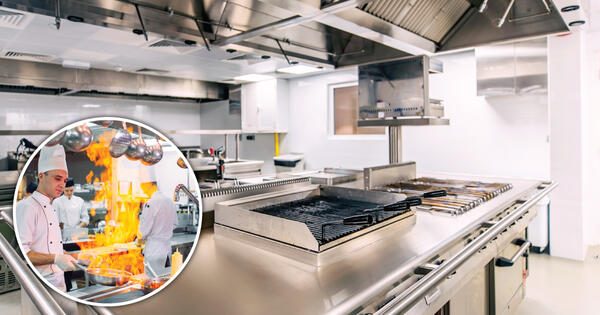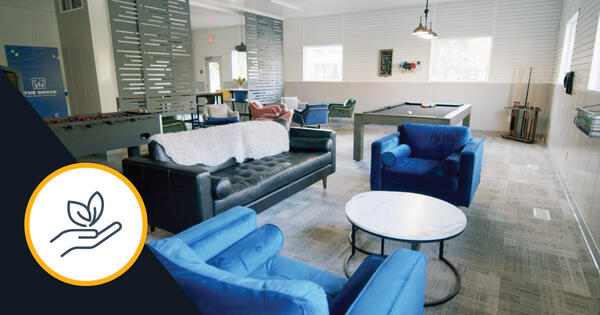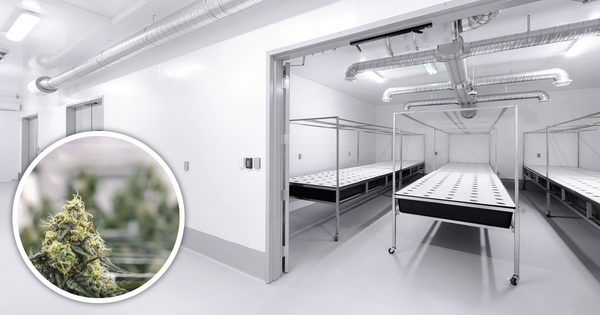In a commercial or restaurant kitchen, the material you choose to cover your walls will play a critical role in maintaining a hygienic environment and keeping food safe. For the best performance, commercial stainless steel wall panels and PVC wall panels are two of your top options (yes, even over fiberglass reinforced plastic!).
The Importance of Choosing the Right Wall Panels for Your Commercial Kitchen
Many building materials and wall panels aren’t designed to withstand the unique environment that is a commercial kitchen. Lots of popular options (like drywall) have porous surfaces that are filled with crevices, which allows bacteria and mold to grow, while others are billed as being water resistant but actually aren’t (like FRP).
To create a clean and sanitary kitchen that meets requirements set out by your local health codes, you need to select wall panels that are easy to clean and resistant to moisture, grease, and stains. They should also have a smooth and non-porous surface to prevent the growth of bacteria, mold, and other contaminants. If your options do not meet this criterion, you shouldn’t install it on your kitchen walls. Luckily, PVC wall panels like Trusscore Wall&CeilingBoard and stainless steel wall panels meet these needs—and more.
Comparing Stainless Steel and PVC Wall Panels for Commercial Kitchen Applications
When you compare stainless steel wall panels and PVC wall panels head-to-head, you’ll notice they share several benefits: They’re both durable, hygienic, and easy to clean. However, when it comes to ease of installation and cost effectiveness, one wall panel has a clear edge over the other.
Which is more durable?
Stainless steel wall panels are highly durable and are resistant to corrosion, rust, and stains. They can withstand normal wear and tear (such as contact with utensils, pots, and pans), exposure to high temperatures, and they won't deteriorate when exposed to water and cleaning chemicals.
The mechanical strength of PVC combined with the unique truss and ½" design of Trusscore Wall&CeilingBoard means that the panels can outlive the kitchens they’re installed in. The abrasion resistance of PVC also means that the panels are impact-resistant and can stand up to contact without showing dents, cracks, or damage. Plus, like stainless steel, PVC panels won’t corrode, rust, stain, or be affected by water or chemical cleaners.
Which is more hygienic?
Stainless steel is non-porous, meaning it won’t absorb liquids, grease, bacteria, or odors.
Trusscore panels also have a smooth, non-porous finish that makes it tough for bacteria, mold, or viruses to take hold, all while being 100% moisture and water resistant. This means steam and humidity from cooking will never be an issue, and the panels can withstand repeated soaking during cleaning without ever-growing mold or mildew. The panels are fully compliant with the requirements set out by the Canadian Food Inspection Agency (CFIA), Food and Drug Administration (FDA), and U.S. Department of Agriculture (USDA) for areas where food is prepared. It also meets Current Good Manufacturing Practice (cGMP) facility requirements.
Which is easier to clean?
Stainless steel panels are super easy to clean and wipe down. The lack of seams, joints, and grout lines reduces the risk of food particles and bacteria getting trapped, reducing the risk of contamination and ensuring you get everything with a single wipe. However, you can damage the panels if you use abrasive or high-strength cleaning supplies. As a result, you should always be mindful of the panels and opt for non-abrasive cleaners and soft cloths to avoid scratching and damaging them.
Whether it’s spilled sauce or oil splatter, you can easily and repeatedly wipe down Trusscore Wall&CeilingBoard with soap and water, disinfectants, sanitizers, and chemical cleaners. The smooth surface of Trusscore commercial kitchen washable wall panels is also stain resistant, so they will always look as good as the day they were installed.
Which is easier to install?
Installing stainless steel wall panels is a multi-step process. First, you must ensure that the wall surface is clean, dry, and free from debris or contaminants. You have to take accurate measurements and transfer them onto the panels before marking your cut lines and cutting them to size. Then, you have to install mounting hardware like brackets, furring strips, or adhesive anchors to the wall to secure the panels to the surface. If the manufacturer recommends using adhesive, you need to apply it to the panels or the wall, too. And that’s all before you ever place a panel on the wall.
Trusscore Wall&CeilingBoard doesn’t require mounting hardware or adhesives to install. Panels can be installed directly on top of studs or over existing wall material like drywall or FRP. And the lightweight panels also have a tongue and groove interlocking system and pre-punched screw flange so that they can be installed quickly with only one person needed for the job.
Which is more cost effective?
The price of stainless steel wall panels and PVC wall panels varies based on factors like the supplier, quality, size, and installation requirements. However, stainless steel wall panels are generally more expensive than PVC wall panels because metal is expensive, and the manufacturing process is lengthy and complex.
With Trusscore Wall&CeilingBoard, you won’t just save on material costs, either. Since the panels are so easy to install and don’t require special tools or skills, you’ll save on labor, too.
Ready to commit to using Trusscore Wall&CeilingBoard in your commercial kitchen? Find a commercial Trusscore dealer today.






